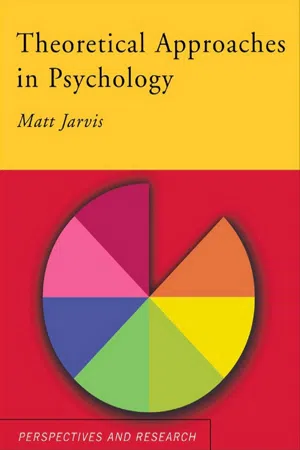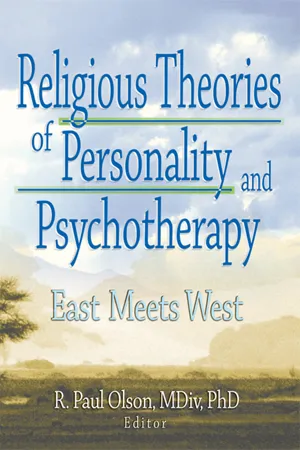Psychology
Humanistic Therapy
Humanistic therapy is a therapeutic approach that emphasizes the individual's capacity for self-actualization and personal growth. It focuses on the present moment and the client's subjective experience, aiming to help individuals develop a stronger sense of self-awareness and self-acceptance. This approach often involves techniques such as empathy, active listening, and unconditional positive regard to facilitate the client's personal development.
Written by Perlego with AI-assistance
Related key terms
9 Key excerpts on "Humanistic Therapy"
- eBook - ePub
Foundations of Counseling and Psychotherapy
Evidence-Based Practices for a Diverse Society
- David Sue, Diane M. Sue(Authors)
- 2012(Publication Date)
- Wiley(Publisher)
View of the Person—People have an innate tendency toward self-actualization or developing to their fullest potential. All humans are born with this natural inclination toward self-growth. Humanistic therapies are optimistic in terms of the potential for individuals to make changes and to develop their own resources. People strive to make sense of their experiences and must be viewed holistically. People are social beings who are best under-stood in terms of their relationships with others. It is through a social relationship, the therapist-client relationship, that constructive change can occur.2. Freedom to Choose—Individuals can become more fully self-aware. This awareness allows for more freedom in making choices about how to live their lives. Because of the potential for self-growth, therapists do not direct or try to persuade the client, but instead provide an environment conducive to clients finding their own direction. Humanistic therapists believe individuals have the right and the capacity to decide what is best for them. Therefore, humanistic therapists adopt a collaborative relationship in which clients are offered great freedom to make their own choices about their lives.3. Focus on Subjective Reality—The emphasis is on the subjective experiences of the individual. Everyone interprets events in an individual manner and it is the subjective experience that is the important focus for therapy. It is the task of the therapist to understand the subjective world of the client.4. Therapist Qualities—Because clients have the potential for self-growth, therapists demonstrate qualities that will enhance this process. These characteristics include being nonjudgmental and demonstrating empathy, genuineness, and acceptance. These qualities furnish the environment in which client self-exploration can occur. In addition, therapists monitor their own reactions to the client to make sure that personal biases or beliefs are not interfering with the therapy.5. Emotions - eBook - ePub
Theories of Counselling and Psychotherapy
An Introduction to the Different Approaches
- Stephen Joseph(Author)
- 2010(Publication Date)
- Bloomsbury Academic(Publisher)
Chapter 5Humanistic and Transpersonal Approaches
Introduction
Humanistic psychology has been referred to as the third force in psychology, after psychoanalysis and behaviourism. It emerged in the middle of the twentieth century as a reaction against the previous ways of looking at human experience, which were seen as overly deterministic. Psychoanalysis was seen as painting a bleak and pessimistic view of human nature, in which people are basically selfish and driven by sexual and aggressive impulses which must be restrained. Behaviourism was seen as objectifying and dehumanizing the person and emphasizing environmental forces as determinants of behaviour. In contrast, the humanistic approach emphasizes human nature as essentially positive. The humanistic model emphasizes choices, values, and purpose in life. Problems are seen as resulting from not accepting personal responsibility for one’s actions. Humanistic therapies therefore strive to enable people to accept responsibility for their actions, to become aware of their subjective experiences, and to fulfil their potential for personal growth. Like behaviourism, early humanistic psychology took a scientific stance but, unlike behaviourism, began to question the traditional medical model. Rather than seeing the client as a passive recipient of expert help, therapeutic approaches in the humanistic tradition emphasized the choices made by the client and the client’s inner resources for change, as opposed to the techniques of the therapist.As Szasz says:People seeking help from psychotherapists can be divided into two groups: those who wish to confront their difficulties and shortcomings and change their lives by changing themselves; and those who wish to avoid the inevitable consequences of their life strategies through the magical or tactical intervention of the therapist in their lives. Those in the former group may derive great benefit from therapy in a few weeks or months; those in the latter may stand still, or sink ever deeper into their self-created life morass, after meeting with psychotherapists for years, and even decades. (Szasz, 1974, pp. 108–9) - eBook - ePub
Person-Centred Counselling Psychology
An Introduction
- Ewan Gillon(Author)
- 2007(Publication Date)
- SAGE Publications Ltd(Publisher)
In this chapter we shall consider the relationship between the person-centred approach and each of these four paradigms, focusing on how person-centred therapy relates to their core assumptions as well as the therapeutic theories and practices they encompass. The chapter represents nothing more than a snapshot of such relationships, and is thus a generalised account rather than a comprehensive overview. Furthermore, the limited extent to which we are able to explore the complexities of each paradigm means that the chapter cannot purport to provide a detailed analysis of these, but instead offer only a basic summary of each. Such an outcome is not ideal, but an inevitable product of our focus being person-centred therapy rather than counselling psychology per se. Any reader wishing a more comprehensive understanding of the therapeutic paradigms presented here, or indeed the therapeutic approaches they encompass, is advised to consult more complete accounts, such as those contained in Woolfe. et al. (2003). Our exploration will instead attempt to summarise the place of the person-centred approach within its counselling psychology context, which is an important undertaking in terms of our goal to explore person-centred therapy from a psychological perspective. Our starting point for this is the humanistic paradigm, and the relationship of the person-centred approach to it.The humanistic paradigmThe humanistic paradigm emerged in the USA during the 1950s and 1960s, and rapidly become known as the ‘third force’ (Bugenthal, 1964) in psychology due to its philosophical differences with behaviourist and psychodynamic standpoints, the first and second forces respectively. In many ways, humanistic psychology was a reaction to these two forces, rejecting the Freudian emphasis on destructive, unconscious urges and the over-simplified, laboratory based analyses provided by behaviourism. For Bugenthal (1964), the humanistic paradigm evolved on the basis of five fundamental postulates (or principles). These are:- Human beings, as human, supersede the sum of their parts. They cannot be reduced to components or isolated elements.
- Human beings have their existence in a uniquely human context, as well as in a cosmic and ecological setting.
- Human beings are aware, and also aware of being aware – i.e., they are conscious. Human consciousness always includes an awareness of oneself in the context of other people.
- Human beings have some choice, and thus responsibility.
- Human beings are intentional and goal-orientated. They are aware that they cause future events and seek meaning, value and creativity.
While each of these postulates highlights a specific aspect of humanistic thinking, they also hint at an underlying philosophy encompassing a small number of core themes. For example, the proposition that human beings are something more than the sum of their parts (i.e. cannot be reduced to components) reflects the theme of holism, a standpoint stressing the importance of viewing people as unique - eBook - ePub
Contemporary Psychotherapies for a Diverse World
First Revised Edition
- Jon Frew, Michael D. Spiegler(Authors)
- 2012(Publication Date)
- Routledge(Publisher)
The therapist’s unconditional positive regard is likely to have more impact because the client experiences the therapist as authentic and truthful. As the therapist demonstrates through empathic response that he or she sees the client clearly and still prizes the client, the client has the opportunity to look freshly through the therapist’s eyes at herself or himself. How Change May Come About The most prominent ways in which person-centered therapy effects change are as follows: The quality of the relationship itself often promotes growth. When clients enter therapy, they often feel stuck in their lives, are discouraged about their capacity to change, and have low self-esteem. In short, they are not feeling very good about themselves or how they are living. They need a sense of hope, which is often assisted by the therapist’s natural optimism about their resourcefulness and capacity to change in a constructive direction. Further, when clients feel accepted for who they are, affirmed and valued by their therapists, they become less defensive and fearful and start to feel better about themselves. Being understood without judgment promotes self-acceptance, which diminishes the impact of self-criticism. As clients become aware that their therapists see characteristics, strengths, and personal qualities in them, they are able, to varying degrees, to view themselves in a more accurate and positive light. Feeling better about themselves, clients often gain confidence to try out new behaviors. During the course of therapy, clients engage in self-exploration and self-discovery. In fact, a major benefit of person-centered therapy is that it facilitates self-definition, or a clearer sense about who one is as opposed to who one thought one was. The self as conceived comes closer to the ideal self, the person the client hopes to be. As the self-concept changes, so does behavior, which now becomes more aligned with a more constructive, capable, and empowered view of self - eBook - ePub
- Matt Jarvis(Author)
- 2005(Publication Date)
- Routledge(Publisher)
- Humanistic psychology has given us a simple, accessible and effective model of counselling. This has meant that many more people have access to psychological help than would probably be the case otherwise.
- Perhaps most importantly, humanistic psychology is alone in the major psychological approaches in emphasising the positive aspects of human nature and adopting a thoroughly positive attitude to humanity.
Despite these contributions, it is almost certain that humanistic psychology will remain a subversive element in psychology rather than part of mainstream psychology. Some of the major limitations of a humanistic approach are as follows:- To an even greater extent than the psychodynamic approach, humanistic psychology has generated theories and ideas that have proved very difficult to test by scientific investigation.
- Because the subject matter of humanistic psychology is the experience of the individual person, there is a logical problem of applying theories generated from one individual to another. We cannot for example assume that two people experience the same thing when they speak of a peak or spiritual experience.
- Many humanistic ideas (particularly those around the development of the self) are extremely culture bound, and cannot easily be applied to a range of societies or historical periods.
- The humanistic emphasis on the individual person means that the importance of external influences on people’s lives have probably been underestimated. As Lerman (1992) has pointed out, a battered wife can learn through humanistic psychology that she has a right not to be abused, but it does not in itself allow her to leave the situation safely.
Summary
Humanistic psychology emerged through the work of Rogers and Maslow, who sought to create a third force in psychology to escape the restrictions of behavioural and psychodynamic psychology. They proposed a simple and optimistic psychology with a minimum of theory that would address what people described as important experiences. The major application of humanistic psychology is in counselling, where the experience of the individual is of paramount importance. Although the humanistic perspective remains important, it has limited influence in psychological research because of its untestable ideas and emphasis on the experiences of the individual. - eBook - ePub
Religious Theories of Personality and Psychotherapy
East Meets West
- Frank De Piano, Ashe Mukherjee, Scott Mitchel Kamilar, Lynne M Hagen, Elaine Hartsman, R. Paul Olson(Authors)
- 2012(Publication Date)
- Routledge(Publisher)
81 The stereotyped view of conversion as a singular, life-changing experience is much less common than an experience of gradual change through time. A developmental perspective seems more accurate and necessary to understanding faith formation, character formation, and spiritual growth. Moreover, a dimensional perspective helps one to comprehend that changes occur in biological, psychological, and social dimensions as well as spiritual, moral, and historical dimensions. The mutual interdependence of all dimensions suggests that change in one dimension of life impacts other dimensions and the person as a whole through the self-structure. Moreover, the holistic principle of Christian personalism points to the whole person as the agent of change. As with the process of psychotherapy, conversion is an experience of the person as a total unity in multiple dimensions through time. Conversion is an experience of transformation of the individual as a whole.A fundamental principle of Christian humanism is that the experience of compassionate confrontation in a therapeutic relationship facilitates constructive change. In response to perceived genuineness, acceptance, and empathic understanding, individuals are liberated from the need to defend their sense of worth by clinging to the self-deceiving illusions they hold about themselves. Two terms expressing the significant role and transforming power of compassion are love and forgiveness. They are central concepts in the teachings of Jesus. Loving and being loved, forgiving and being forgiven, are also potent mechanisms of therapeutic change.82Christian humanism is not a naïve or sentimental view of the human capacity to change. Rather, it recognizes the depth of human alienation and the need to confront individuals with their self-serving motives and rationalizations, and with the negative impact of their attitudes and behavior upon others in addition to their self-destructive consequences. Individuals who have been avoiding responsibility must be shown that even avoidance is a choice with consequences.Individuals in therapy need encouragement in order to find the courage to accept their disowned past, to cope with their distressing present, and to anticipate an unwanted future or to envision a better one and make it happen. Reality is not easy to accept, and often painful to confront. But as with the pain after surgery, the stress of confronting reality holds the promise of potential healing. The experience of compassion is encouraging, and compassion enables and motivates one to be empathic toward self and others. - eBook - ePub
Theories for Mental Health Nursing
A Guide for Practice
- Theo Stickley, Nicola Wright, Theo Stickley, Nicola Wright(Authors)
- 2013(Publication Date)
- SAGE Publications Ltd(Publisher)
4Humanistic Theories PAUL CASSEDYLearning ObjectivesIntroduction• Understand the historical development of person-centred theory and its key principles.• Understand Carl Rogers’ (1951) development of self-concept and self-actualisation.• Differentiate between positive regard, unconditional positive regard and conditions of worth.• Acknowledge the core conditions, congruence, empathy and unconditional positive regard as necessary for therapeutic relationships.• Understand Abraham Maslow’s (1970) theory of motivation and the hierarchy of needs and as it applies to nursing practice.• Acknowledge the key principles of the person-centred approach as applied to mental health nursing.Person-centred theory, which developed from the humanistic movement in the twentieth century, has become one of the most popular theories of counselling and therapy. The underpinning principles and philosophy of this approach are also transferable to many, if not all, aspects of mental health nursing. The theory places great emphasis on viewing people as essentially trustworthy, social and creative and are motivated towards reaching personal potential. However, and for whatever reason, there are times in our lives that this natural healthy state of being becomes thwarted and help is needed. This can be a challenge for mental health nurses and calls for us to vacate the role of being the expert and begin to recognise the person’s innate ability and inner resources to move in positive directions.The approach focuses on holistic care that addresses and treats the human person, rather than their illness, condition or a collection of ailments. We need to recognise and tolerate individual differences and the unique potential in each person. In doing so the mental health nurse needs to be able to perceive the world from another’s perspective.The emphasis of a humanistic approach is to work in the here-and-now, to listen attentively and enter into an equal relationship. Rather like becoming a companion on the individual’s journey, facilitating further understanding on their road to controlling their own lives with a positive outcome. - Stephen Paul, Divine Charura(Authors)
- 2014(Publication Date)
- SAGE Publications Ltd(Publisher)
genuineness of the therapist which was directed towards the client with positive regard and warmth.Kahn notes Rogers’ ‘contribution to our understanding of the relationship between therapist and client was … monumental’ (Kahn, 1997: 36), and ‘If we exclude those of Freud, it is hard to name another set of books that has an impact on clinical practice equal to Rogers’ (Kahn, 1997: 37).Other humanistic therapists saw authenticity as more allied with an honest, open, ‘no punches pulled’ approach to human encounter (Kahn, 1997). The mainly European existential schools were concerned more with the authenticity of the therapist. By this they mean being as truly oneself as one can be in each moment and being with others in that way. The focus therefore was more on a truthful intimacy than the communication of warmth.Existential writers (Heidegger, 1962) used the term ‘Dasein’, literally meaning ‘being there’, to be truly present with another. Authenticity is one of a number of similar concepts, such as genuineness, congruence and being real in the TR. All these terms describe a process whereby the therapist does not try to hide their feelings behind a professional mask, but meets the client in a person-to-person relationship, with a willingness to share experience in the relationship.The person-centred concept of congruence is an importance example of the humanistic perspective. A congruent response requires the therapist to be aware of their own inner experience and to communicate this to the client. The belief here is that the therapist’s ability to be real will deepen the TR and the therapist’s example will enable clients to take the risk of becoming more real, both to themselves and to the therapist. Rogers (1966: 185) states:Genuineness in therapy means that the therapist is his [sic] actual self during his encounter with his client. Without façade, he openly has the feelings and attitudes that are flowing in him at the moment. This involves self-awareness; that is, the therapist’s feelings are available to him – to his awareness – and he is able to live them, to experience them in the relationship, and to communicate them if they persist. The therapist encounters his client directly, meeting him person to person. He is being himself, not denying himself.- eBook - ePub
How Therapists Act
Combining Major Approaches To Psychotherapy And The Adaptive Counselling And Therapy Model
- Don W. Nance(Author)
- 2020(Publication Date)
- Taylor & Francis(Publisher)
ACT Therapist Style Inventory that my preference was S 2—Teaching with S 3—Supporting and S A—Delegating next in order. S 1—Telling was seldom my choice.ELEMENTS OF A HUMANISTIC ORIENTATIONBeliefs about the Human Experience
The humanistic therapist holds that his or her particular view of the world is not the only one possible and that “reality” is not objectively given but is personalized and individual. Consequently, understanding any human being is achieved through focusing on his or her subjective phenomenological world. Each person has an undeniable right to his or her own unique experience. A holistic view stresses that human beings have an essential core that is indivisible. Humanists do not believe it is useful to divide experience into dichotomies (e.g., mind vs. body, thought vs. feeling, conscious vs. unconscious).Staying in the present with the emphasis on the “what” rather than the “why” of experience is of critical importance when relating to another’s phenomenological world. As the Polsters (1973) pointed out, the search for meaning is a human reflex, but the “compulsion” to meaning frequently drowns out experience itself. What is not available to immediate awareness will emerge as the person becomes ready through self-exploration and self-discovery. Awareness is coupled with the experience of choice. Experiencing ourselves as having to make a choice is what gives life shape and meaning. In making choices we create much of our own existence and, therefore, are responsible for it.Beliefs about Counseling/Psychotherapy
Therapy is an encounter between two human beings, both of whom will be changed by what happens between them. For the therapist to be genuine in this encounter, a congruence between life inside and outside of therapy must exist. Therapists, like clients, are indivisible and viewed from a holistic perspective.
Index pages curate the most relevant extracts from our library of academic textbooks. They’ve been created using an in-house natural language model (NLM), each adding context and meaning to key research topics.








